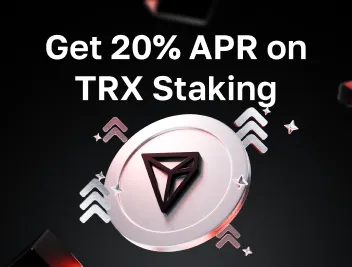What Is A Cryptocurrency Market Cap?
Imagine walking through a busy market where each stall represents a different cryptocurrency, each trying to grab your attention. There, market capitalization is like a sign that tells you how valuable each cryptocurrency is. It shows you not only the price of a coin but also how much confidence people have in it.
Understanding the crypto market cap helps you make sense of the ups and downs of the crypto world and can guide you toward smart investment choices. Let’s break down what market cap means and why it’s essential for anyone interested in cryptocurrency.
What Does Market Cap Mean In Crypto?
In the crypto world, market cap, or market capitalization, indicates the total market value of a specific cryptocurrency based on its current price and the number of coins in circulation. It serves as a key indicator of a cryptocurrency's significance in the market, helping investors identify which coins are dominant and which ones might be undervalued or have growth potential.
A higher market cap often suggests that a cryptocurrency is a well-established and more stable investment, while a small market cap may indicate that the token is still gaining traction and can be more volatile, offering greater risks. Small-cap coins are considered to have a market capitalization of under $1 billion.
The highest recorded market cap for the cryptocurrency market as a whole occurred in November 2021, when it reached approximately $3 trillion. This peak was largely driven by the significant rise in prices for major cryptocurrencies like Bitcoin and Ethereum, as well as the growing popularity of altcoins and decentralized finance (DeFi) projects.
If we talk about the current state of the market the total cryptocurrency market cap is $2.42,. This figure can fluctuate significantly based on market conditions, as the value of cryptocurrencies changes rapidly. The total market cap excluding the top 10 cryptocurrencies (e.g., BTC, ETH, BNB) is approximately $550 billion
How Is Market Cap Calculated?
Market cap is calculated by multiplying the current price of a cryptocurrency by its circulating supply. This simple formula provides a clear view of the total market value of a cryptocurrency.
Market Cap = Current Price × Circulating Supply
- Current Price: This is the current trading price of a single unit of a cryptocurrency. Market cap reflects real-time value, so as prices fluctuate, market cap changes accordingly.
- Circulating Supply: This refers to the total number of coins or tokens that are available and actively circulating in the market. It excludes any locked, reserved, or non-mined tokens, focusing only on the tokens currently in public hands.
For example, let’s say a cryptocurrency is currently priced at $10, and there are 5 million coins in circulation. To calculate the market cap:
Market Cap = $10 × 5,000,000 = $50,000,000
In this example, the cryptocurrency’s market cap would be $50 million. This value helps investors do a comparison with other cryptocurrencies and make more informed investment decisions.

How Does Market Cap Affect Crypto Price?
Market capitalization doesn’t directly impact the price of a cryptocurrency but reflects its size and perceived stability. Generally, cryptocurrencies with a high market cap, such as Bitcoin or Ethereum, are seen as more established and less volatile, which attracts more conservative investors and contributes to steadier price movements. On the other hand, cryptocurrencies with smaller market caps tend to be more volatile, with prices that can shift significantly based on market demand, news, or investor sentiment. Thus, while market cap provides a general measure of an asset, it is the dynamics of supply and demand that directly influence price.
Another important metric is trading volume, which reflects the total amount of cryptocurrency bought and sold within a specific period (usually 24 hours). Trading volume indicates the liquidity of an asset: the higher the volume, the easier it is to execute transactions without impacting the price. An asset with high trading volume shows active interest from buyers and sellers, making it more accessible for market transactions.
For example, UNUS SED LEO has a substantial market cap of $5.5 billion, but its daily trading volume is only around $14 million. This discrepancy suggests that despite its high market cap, the cryptocurrency remains relatively illiquid, making it harder to buy or sell in large quantities without causing significant price fluctuations. Thus, a high market cap can imply stability, but low trading volume points to limited interest and high volatility, which affects the asset’s accessibility for larger transactions.
What Is Fully Diluted Market Cap Crypto?
A fully diluted market cap in crypto represents the total value of a cryptocurrency if all its potential tokens were in circulation. It’s calculated by multiplying the cryptocurrency’s current price by its maximum supply—the total number of coins that will ever exist, including those not yet mined, locked, or vested.
Fully diluted market cap provides insight into the potential future value and size of a cryptocurrency, giving investors a sense of the asset’s scale once it reaches full circulation. This metric can be particularly helpful when evaluating newer projects, as it allows for a comparison of long-term value against established assets, though it’s also important to remember that not all tokens will immediately be available in the market.
What Is A Good Volume To Market Cap Ratio?
The volume to market cap ratio is an essential metric that helps evaluate the liquidity and trading activity of a cryptocurrency. This ratio is calculated by dividing the 24-hour trading volume by the market cap, providing insights into how actively an asset is traded relative to its overall size.
A high ratio suggests strong trading activity relative to the asset's overall market size, which can indicate healthy liquidity and investor interest. Conversely, a low ratio may signal lower interest or even potential stagnation.
More specific:
- A ratio >1.0 indicates that trading volume is high relative to the market cap, suggesting strong liquidity and significant interest in the asset. This high ratio can often be seen in highly volatile or speculative assets.
- A ratio between 0.1 and 1.0 is often considered healthy for established cryptocurrencies, as it implies steady interest without excessive speculation. This is commonly observed in well-known assets like Bitcoin and Ethereum.
- A ratio <0.1 may indicate low liquidity or stagnant interest, which could make buying and selling the asset more challenging without impacting its price.
In conclusion, understanding market cap and its related metrics can provide valuable insights into the size, stability, and potential growth of different cryptocurrencies. These indicators help both seasoned investors and newcomers navigate the complexities of the crypto market.
As you explore further, consider how these factors align with your own investment goals and risk tolerance. Are there any specific metrics you prioritize when evaluating a cryptocurrency’s potential?
Thank you for reading, and feel free to reach out with any questions or insights!
Rate the article










comments
34
You must be logged in to post a comment
jv*********o@gm**l.com
muy buena opcion
jv*********o@gm**l.com
muy buena opcion
jv*********o@gm**l.com
muy buena opcion
fa********5@gm**l.com
The cryptocurrency platform is so amazing now that I do it and recommend it to everyone
de*********o@gm**l.com
Learning about the market
zo******4@gm**l.com
Nice idea
yo************7@gm**l.com
Very good explanation about market capitalization. Nowhere else have I read it so clearly, congratulations!
jv*********o@gm**l.com
muy buena opcion
jv*********o@gm**l.com
muy buena opcion
di*********7@gm**l.com
One of the most useful articles that I read is very detailed and clearly set out
li******3@ou****k.com
this is good for trading
ha*******8@gm**l.com
I really benefited a lot from this article
jv*********o@gm**l.com
muy buena opcion
mi********9@gm**l.com
Such a nice and educative blog,, Cryptomus is surely the best
f0****3@gm**l.com
It is informative and interesting.